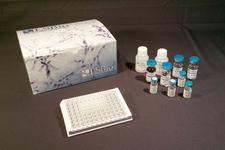order histories, retained contact details for faster checkout, review submissions, and special promotions.
Forgot password?
order histories, retained contact details for faster checkout, review submissions, and special promotions.
Location
Corporate Headquarters
Vector Laboratories, Inc.
6737 Mowry Ave
Newark, CA 94560
United States
Telephone Numbers
Customer Service: (800) 227-6666 / (650) 697-3600
Contact Us
Additional Contact Details
order histories, retained contact details for faster checkout, review submissions, and special promotions.
Forgot password?
order histories, retained contact details for faster checkout, review submissions, and special promotions.
RPE65
retinal pigment epithelium-specific protein 65kDa
Plays important roles in the production of 11-cis retinal and in visual pigment regeneration. The soluble form binds vitamin A (all-trans-retinol), making it available for LRAT processing to all-trans-retinyl ester. The membrane form, palmitoylated by LRAT, binds all-trans-retinyl esters, making them available for IMH (isomerohydrolase) processing to all-cis-retinol. The soluble form is regenerated by transferring its palmitoyl groups onto 11-cis-retinol, a reaction catalyzed by LRAT. The enzymatic activity is linearly dependent of the expression levels and membrane association.
| Gene Name: | retinal pigment epithelium-specific protein 65kDa |
| Synonyms: | RPE65, LCA2, RBP-binding membrane protein, Retinol isomerase, SRPE65, Rd12, MRPE65, Retinoid isomerohydrolase, RP20 |
| Target Sequences: | NM_000329 NP_000320.1 Q16518 |
Publications (18)






If you do not find the reagent or information you require, please contact Customer.Support@LSBio.com to inquire about additional products in development.









